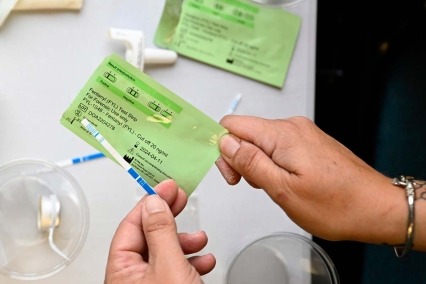Highlights
Image

©Getty Images/Denver Post
- Potentially harmful substances like fentanyl and xylazine can be mixed into a variety of drugs without people knowing it, raising the risks of overdose and other harms. Drug checking (not to be confused with drug testing) is a harm reduction practice in which people check to see if drugs contain certain substances. Some drug checking methods (such as fentanyl test strips) can be used anywhere people use drugs, while other methods (like infrared spectrometry) are performed on-site at facilities like syringe services programs and overdose prevention centers.1, 2
- NIDA-funded research3, 4 shows that some people change their drug use behavior when their drugs test positive for fentanyl. This includes not using alone3 and using smaller amounts of the drug more slowly.4 NIDA funds research to determine whether drug checking helps reduce harms associated with drug use, such as overdose.
- NIDA also supports research to better understand if and how drug checking technologies can become more accurate, accessible, and effective. This includes developing and testing smartphone- and internet-based drug checking services, mobile drug checking facilities, and programs that integrate access to fentanyl test strips into overdose response and education.
Latest from NIDA
What do drug tests really tell us?
|
Stephanie Weiss’s research helps labs use drug screening tools appropriately and interpret results correctly
NIH and FDA leaders call for more research, lower barriers to improve and implement drug- checking tools amid overdose epidemic
|
Tools such as fentanyl test strips hold promise to reduce drug-related harms and save lives
NIH Invests in a New Harm Reduction Research Network
|
Enabling people to access treatment is critical, but first people need to survive long enough to have that choice
Find More Resources on Drug Checking
- Learn more about fentanyl test strips from the Centers for Disease Control and Prevention (CDC).
- Read more about how drug checking and other harm reduction practices contribute to the U.S. Department of Health and Human Services Overdose Prevention Strategy.
- Learn more about drug checking and its role in harm reduction from the U.S. Department of Justice.



